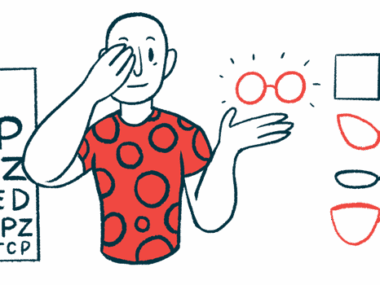Batten-1 Shows Good Safety, Tolerability in CLN3 Disease Trial
Early data is promising for Theranexus' novel juvenile Batten therapy
Written by |

Treatment for up to two months with Batten-1 — Theranexus’ novel therapy for juvenile Batten disease, also known as CLN3 disease — was found to be generally safe and well-tolerated in patients ages 17 and older.
That’s according to early data from an ongoing two-year Phase 1/2 clinical trial (NCT05174039) testing the experimental oral therapy.
In addition, the therapy’s pharmacokinetics, or its movement into, through, and out of the body, were “in line with expectations,” a joint press release from Theranexu and the Beyond Batten Disease Foundation (BBDF) stated. The BBDF is sponsoring the trial, which is slated to run through October 2024.
“We are delighted that Batten-1 showed good safety and tolerability for our patients suffering from Batten disease,” said Craig Benson, chair of the BBDF. “The trial results are highly encouraging and offer tremendous hope for all those families living with this neurodegenerative disease for which there is currently no available treatment.”
Added Marie Sebille, MD, Theranexus’ chief medical officer: “We have achieved an important milestone with these Phase [1/2] results in CLN3 patients, enabling us to prepare the protocol of the Phase [3] trial to launch our pivotal clinical trial involving a pediatric cohort during 2023.”
New trial ahead for Batten-1
The upcoming Phase 3 trial will use a liquid form of Batten-1 instead of the solid formulation being administered in the Phase 1/2 trial. The liquid formulation is “better suited for children,” the release stated.
If positive, the results from the Phase 3 trial will be used to support a future regulatory application seeking the therapy’s approval for juvenile Batten.
The trial results are highly encouraging
Juvenile Batten, caused by a mutation in the CLN3 gene, is the most common form of Batten disease. That gene mutation leads to the accumulation of waste deposits, particularly certain fatty molecules, inside lysosomes, cells’ recycling factories. Nerve cells are mostly affected, leading to vision loss and progressive motor and cognitive decline.
Batten-1 is a new proprietary candidate therapy whose active ingredient is miglustat, a molecule that works by partially suppressing the production of the waste molecules that build up to toxic levels in Batten and other disorders, such as Gaucher disease.
Marketed by Actelion as Zavesca, miglustat is an approved therapy for type 1 Gaucher disease.
BBDF-101, a combination of miglustat and trehalose — a natural sugar molecule shown to promote cellular waste clearance — was initially slated for development by Theranexus and the BBDF for the treatment of juvenile Batten. However, preclinical data showed the potentially superior efficacy of miglustat alone for Batten disease.
The partners decided to proceed with the clinical development of miglustat alone, renaming the therapy Batten-1.
The Phase 1/2 trial, which completed recruitment in September, is assessing the safety, tolerability, pharmacokinetics, and efficacy of escalating doses of Batten-1 in six adolescents and adults with CLN3 disease.
Overall efficacy will be measured through changes in the Unified Batten Disease Rating Scale — a standardized measure of behavior in Batten disease — as well as by improvements in visual acuity, and brain and eye imaging scans.
Participants are receiving an oral capsule of the therapy, up to a maximum daily dose of 600 mg, for two years.
Newly announced data, concerning nine weeks of treatment, showed that Batten-1 was associated with favorable safety, tolerability, and pharmacokinetics profiles.
Gastrointestinal problems, of light to moderate severity, were the most commonly reported adverse events, but were reversible. There were no reports of severe side effects leading to treatment discontinuation.
“Batten-1 will continue to be assessed in these patients” over the two-year treatment period, the release stated.






